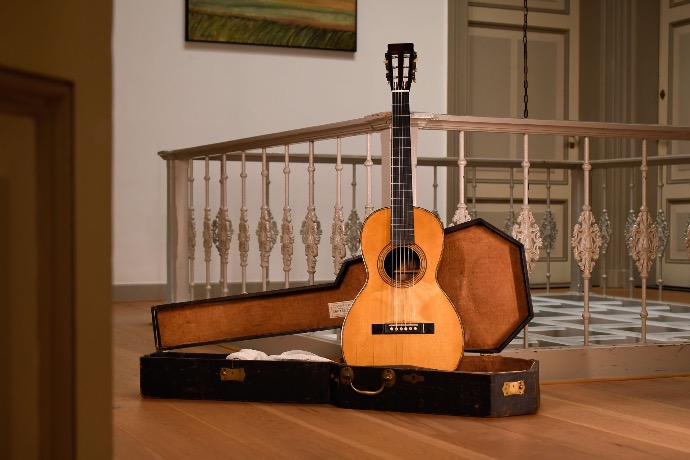Christian Frederick Martin was born into a family of violin builders. The guitar was only a recent development and hadn’t garnered a lot of attention yet. Christian studied with Viennese master builder Johann Stauffer, met his wife in Vienna and moved back to Germany to start his new guitar shop. Unfortunately there was a rich violin building tradition in Europe at the time and the Violin Makers Guild claimed they had the right to build any instrument with strings on it. On the 9th of September 1833, Christian and his family entered a boat to head for the United States and find new opportunities. After a whole 2 months of travel they arrived in New York City. Only a few months later Christian opened up shop in Lower Manhattan and changed guitar making forever.
The First Martin Models
In 1840, CF Martin made the move up to Nazareth, Pennsylvania, about an hour drive from New York. During this time, the only guitars that were being built were small bodied instrument, which we now call parlor guitars. It was only in 1854 that Martin introduced a “larger concert” guitar which we now know as a the single 0 model.
In 1857, you had only a few options when ordering a Martin Guitar, and the company used a two number system to name the models. The first digit designated the size of the guitar and the second number was originally the wholesale price, which tells us that this specific guitar costed 24 dollars when it left the store. Later on this number represented the quality of the instrument and the amount of added luxurious details.
Before the single 0 model, the size 1 was the biggest Martin offered and was considered the “standard”. The size 2 was meant for female guitar players, and the size 5 was the smallest, meant for children.


The Martin 2-24 from 1857
The size 2, style 24 model is a beautiful guitar with Brazilian rosewood back and sides and a red spruce top. It has an ebony fingerboard without inlays and rosewood binding on the top and the back.
The 2-24 from our Benchtalk episode was built in 1857 and still looks very good, which is due to a professional restorations by Roman Zajicek of Rozawood Guitars.
The Restoration
When the 2-24 entered his workshop, he found out the guitar already had a few poor reparations under its belt. The first thing Roman did, was to disassemble the guitar, which means to remove the neck from the body and remove the top from the back and sides. The colored wooden purfling was damaged on many spots all around the top, so he decided to remove the binding with a router bit and make a completely new Brazilian rosewood binding and purfling.
The next thing that needed attention were the top braces. Most of them were loose so they needed to be removed and glued properly. Hide glue was used for this procedure. Roman made a new Brazilian rosewood bridge plate, slightly larger than the original one. This had 2 reasons: a bigger bridge plate would make the central area between the X-braces and the bridge stronger and more stable, and doing this would leave the new owner with the possibility of changing to steel strings, even though Roman wouldn’t recommend that.
There were also a few cracks in the back and sides that needed repairing before the assembly. The original guitar was finished in shellac but the lacquer was damaged in certain spots, which is why Roman asked for the help of expert classical guitar luthier Petr Vancata to apply a new shellac finish.
Benchtalk #6: Martin 2-24
Because of this incredible restoration we can now admire this piece of Martin history for many years to come. We would like to thank Roman Zajicek for his amazing work on this guitar.
Check out the full episode to the right! If you have any questions about this instrument, contact us, or click below to check out the guitar.




